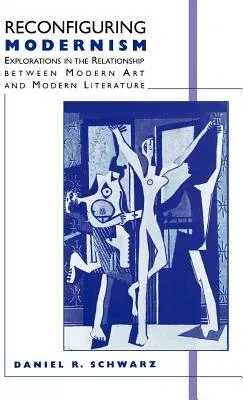Daniel R Schwarz
(Author)Reconfiguring Modernism: Explorations in the Relationship Between Modern Art and Modern Literature (1997)Hardcover - 1997, 14 September 1997

Qty
1
Turbo
Ships in 2 - 3 days
In Stock
Free Delivery
Cash on Delivery
15 Days
Free Returns
Secure Checkout

Print Length
241 pages
Language
English
Publisher
Palgrave MacMillan
Date Published
14 Sep 1997
ISBN-10
0312126557
ISBN-13
9780312126551
Description
Product Details
Author:
Book Edition:
1997
Book Format:
Hardcover
Country of Origin:
US
Date Published:
14 September 1997
Dimensions:
21.77 x
14.68 x
2.26 cm
ISBN-10:
0312126557
ISBN-13:
9780312126551
Language:
English
Location:
New York
Pages:
241
Publisher:
Weight:
376.48 gm